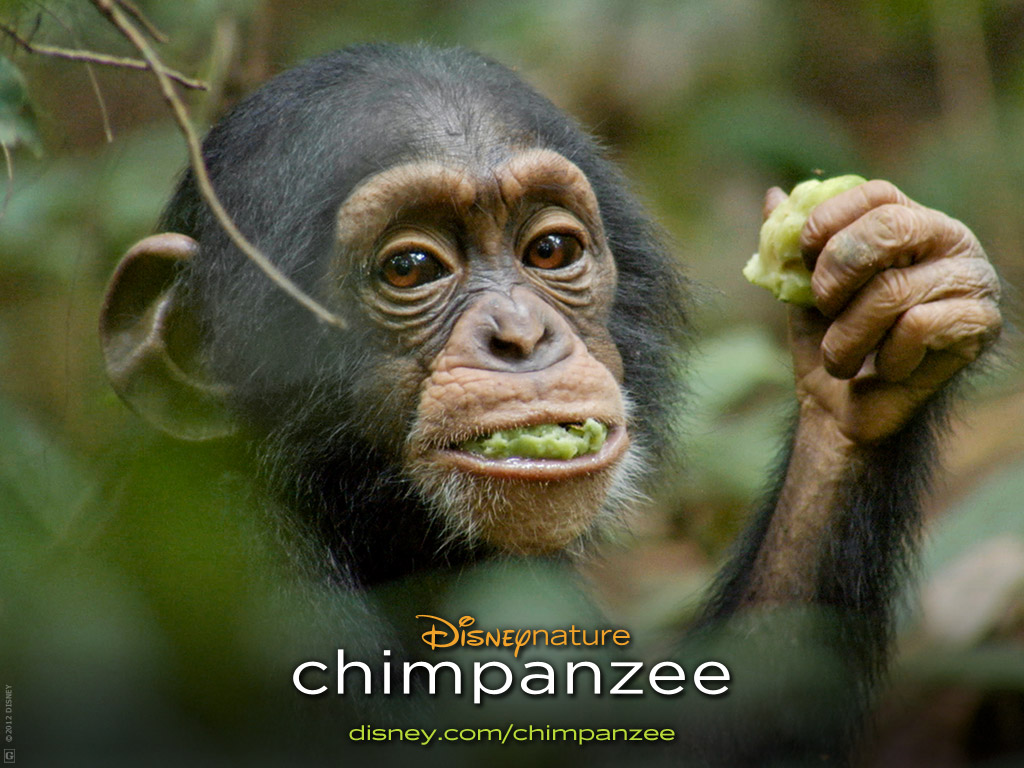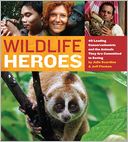Actors have The Actor’s Studio, the Redskins have the Redskins Report, and politicians have Meet the Press. Now the greenmomster’s got Treehouse Chats, a once-a-month introduction to someone working or volunteering in the environmental field.
This month, we’re chatting with Erin and Daniel Lebbin who both work for the American Bird Conservancy (and happen to be my next-door neighbors!).
What is your educational background?
Daniel- I studied Biology and Environmental Policy in college. After that, I earned a PhD in Ecology and Evolutionary Biology studying birds in the Amazon.
Erin- I come from a humanities background with degrees in English Literature and Art History.
What is your current job and what do you like best about it?
Daniel- I currently work for American Bird Conservancy (ABC) where I manage conservation projects in South America. In these projects, I work with local partners to create new nature reserves for some of the most endangered birds in the world. The part I like best is the feeling that I can make a difference. (Check out his book,
The American Bird Conservancy Guide to Bird Conservation)
Erin - Daniel and I are lucky to work together at ABC; my job is to raise money for conservation projects in Latin America and the Caribbean. I'm with Daniel-- the best part of my job is protecting land, including some of the most biologically rich forests in the Americas. (Editor’s note: their protection of birds is truly a family affair – their standard poodle accompanies them to the office each day!)
Tell us about some of your work/travel/research.
Erin- Since I have been working with ABC, I have visited some of our project sites in Colombia and Peru. I take people who have supported the projects so they can see the real results of their philanthropy.
Daniel- I travel to South America to visit partners and project sites where I document successes and work to resolve problems. I mostly go to Peru where we have projects high in the mountains where there are glaciers, to the lowlands of the steamy Amazon jungle. In two weeks, I will go to Bolivia where I will visit a project in the Beni Savannnah, home to the Blue-throated Macaw.
What is your favorite activity outside of work? (green or not green)
Erin- I love gardening, reading, hiking, and traveling.
Daniel- Birdwatching, ultimate frisbee, and spending time with friends.
Do you do any environmental volunteering outside of work?
Daniel- When Erin and I lived in Baltimore, we volunteered for Lights Out Baltimore, a program that monitored bird collisions with glass buildings along Baltimore Harbor. This involved getting up very early in the morning, pre-sunrise, searching the buildings for injured or dead birds and sometimes rescuing dazed and confused birds that were still alive. When birds migrate at night, they can get confused by artificial lights and collide with glass windows that they don't see. ABC is working to reduce this problem through better design of buildings, lighting, and retrofitting existing windows with bird tape to make them more visible.
Do you have a favorite environmental book or movie?
Erin-I can watch Planet Earth over and over again.
Daniel- Horton Hears a Who.
Favorite non-meat meal?
Erin- Spinach rice casserole from one of the Moosewood cookbooks.
Daniel- Polenta Pie
What's the place that most inspires you to keep working for the environment?
Erin- Definitely the giant Sequoia groves in the Sierra Nevadas of California.
Daniel- The Andes
Do you have one green tip for blog readers?
Erin- Plant native trees, shrubs, and wildflowers in your yard. In a time when more and more natural habitat is lost every year, our native gardens can provide food and shelter for birds, butterflies, and beneficial insects.
Daniel- Keep your housecats in doors. It's healthier for them, and better for wildlife. Outdoor cats kill hundreds of millions, and perhaps even a billion, birds in the US alone each year. Cats are also a favorite prey of coyotes, often get hit by cars, and are more susceptible to diseases. If you love your cat, keep it indoors.
 rses live in shallow tropical and temperate waters around the world. Although they’re not good swimmers, these tiny fish (from 1/2 inch to more than a foot long) can manage to eat up to 3,000 brine shrimp per day. Seahorses use camouflage for protection and can anchor themselves to plants and coral by holding on with their tails. Seahorses’ main threats to survival include overharvest for both the Asian medicine and aquarium trade, loss of habitat, and loss by by-catch (non-target fish captured in fishing nets). Scientists and conservationists around the world are working hard to protect sea horses with innovative programs. Project Seahorse is one organization trying to protect seahorses by saving seahorses directly, protecting the world’s shallow seas, cleaning up fisheries, making the fish trade sustainable, and training conservationists. Scientists are also trying to develop captive breeding programs for seahorses – a very tricky task indeed.
rses live in shallow tropical and temperate waters around the world. Although they’re not good swimmers, these tiny fish (from 1/2 inch to more than a foot long) can manage to eat up to 3,000 brine shrimp per day. Seahorses use camouflage for protection and can anchor themselves to plants and coral by holding on with their tails. Seahorses’ main threats to survival include overharvest for both the Asian medicine and aquarium trade, loss of habitat, and loss by by-catch (non-target fish captured in fishing nets). Scientists and conservationists around the world are working hard to protect sea horses with innovative programs. Project Seahorse is one organization trying to protect seahorses by saving seahorses directly, protecting the world’s shallow seas, cleaning up fisheries, making the fish trade sustainable, and training conservationists. Scientists are also trying to develop captive breeding programs for seahorses – a very tricky task indeed. with “heroes”, “bad guys”, and a conflict. The filmmakers very cleverly weave together nature footage to tell an entertaining story, and, as an extra plus, they teach us quite a bit about chimpanzees. The photography is incredible, but never gets in the way of the story and the chimpanzees. Additionally, filmmakers managed to document a behavior rarely seen by scientists – a dominant male chimpanzee “adopting” a baby chimpanzee after its mother is killed. I highly recommend this movie for your entire family!
with “heroes”, “bad guys”, and a conflict. The filmmakers very cleverly weave together nature footage to tell an entertaining story, and, as an extra plus, they teach us quite a bit about chimpanzees. The photography is incredible, but never gets in the way of the story and the chimpanzees. Additionally, filmmakers managed to document a behavior rarely seen by scientists – a dominant male chimpanzee “adopting” a baby chimpanzee after its mother is killed. I highly recommend this movie for your entire family!
![clip_image001[5] clip_image001[5]](https://blogger.googleusercontent.com/img/b/R29vZ2xl/AVvXsEhW7YcU_nwbuxRds45nMhibyaIcvNCMtXDHFeseP2N15FAXXSrdArWwlUIUbCd7l9JF05lqI5jfQ0KXXiEutNby49D_ykAwQCQhaUKAJewvrTdu-NFparVuFISVQXvTt9KiRYUVBtFgmbI1/?imgmax=800)
![clip_image001[7] clip_image001[7]](https://blogger.googleusercontent.com/img/b/R29vZ2xl/AVvXsEjOcnRSo0hMRBl9ZTjiJHyhBmfG-9Hym10fJym2e1FxwXnJ1UWue8ujo6pcT08LqD4Nml_AC1o935fm2XZPhH99lZWrbLPF_dEbnmO8FkDDJpOlx4l0uGbdkNbdEGbZ8GGfrgPg4NQkB56I/?imgmax=800)
![clip_image001[10] clip_image001[10]](https://blogger.googleusercontent.com/img/b/R29vZ2xl/AVvXsEhTqoEYI8FtIFgjvbiGkAPo0yXUOi1fedMkmp7jkSEkRJgd3JIie-rIFckMirXKcOYjmGOoRVSPopsPIZFbDGPiI-81dPs8DleAn-wdRTH37SVz3l8M8EtCRq_FR8Iugp-88e4bkbWdjFPf/?imgmax=800)
![clip_image001[12] clip_image001[12]](https://blogger.googleusercontent.com/img/b/R29vZ2xl/AVvXsEgslmMgrdIkTLzLVDgKFJj4AKWHbHanv4sHcitLGRB7sXegLjeGi6UjrarPGFNT34BZRh29wmNwnK2f5wLlUHY22rPWR6Bl4Te-hhi_aM6oh-ohpHPvw5FSghxt-AKmVp6FATuG4-X92_1N/?imgmax=800)
![clip_image001[14] clip_image001[14]](https://blogger.googleusercontent.com/img/b/R29vZ2xl/AVvXsEip30Q9-6aIGlWol6LhpuuY7uL9p4EBzWKQuAOCu4BcsyidPyfgUb84h0N2xdsCSWnQYc6-wwNSP2UOam-DxVKstRprpXk25elHGGnkSa-zsJTYfBnijpfgsdC2IJNYaO0_RnwzpCkP1H0Q/?imgmax=800)
![clip_image001[16] clip_image001[16]](https://blogger.googleusercontent.com/img/b/R29vZ2xl/AVvXsEihRWB0YtmG3vCi0aCBs8qBBBJ9lmCwjoe4V97seAxREEn2zgEuCH3UfDFjAa0bDqXfohmTBtODmfcOZGx-3lQ1iDQGYSf2BrtyZXwkggZr7lVkZc9PxxgULVWptxVGcaxvgG7tDOzUSq0r/?imgmax=800)
![clip_image001[18] clip_image001[18]](https://blogger.googleusercontent.com/img/b/R29vZ2xl/AVvXsEg5hQNz3faodm1KPXFomDGJKfyTNlDR9EIwoO-fnHB_OPvj3GDO-1ZxgdqsUzneSx1mh-ga2dt51ZAa7kqvG64t4eHsccm4eZnL8gTvI7H7KX9AavKUw4N3vUJ7yfMf-VgxY-l2xNKKiRX2/?imgmax=800)
![clip_image001[20] clip_image001[20]](https://blogger.googleusercontent.com/img/b/R29vZ2xl/AVvXsEjcOEb_BFhPR-tmsuMLWTcnnaTg5KzzH0v2DfkRqKOdsLYilgC4_1wUk2kUQUSdjl4EG1lutiM2_T6HW63_DXWYrsLqKbpLDk6FRg-j4JRzkWsIB_LqTCKwEwI0qm6peg1y_1niC8Tf0Uah/?imgmax=800)
![clip_image001[22] clip_image001[22]](https://blogger.googleusercontent.com/img/b/R29vZ2xl/AVvXsEiFUGYPMjX8XGMNDVPp4BQh6MK4VcZNtC4dW3cV6HlbE8MJ1oosivy4P7b3-mXm4F0qf0xpLPkRQAdyy4JEY2dzs9R5c4tIDvrRCdKN-qnKmg-BkR7O7N_TlPmPqGNhzMSwafAUrUidctPq/?imgmax=800)
![clip_image001[24] clip_image001[24]](https://blogger.googleusercontent.com/img/b/R29vZ2xl/AVvXsEhLooifL2H9WBy15_fdQKSlOUnsIY64xY_BRNFg9ZAANM2WL1rFPk_g2Aa7FhBWYnADEZnS9VuoulnpnOu5RCLvmOy2UZOBwWmt1UKxL3TgXBR1i2ypeNYbUGX1ZkmsQLFWpyzJEhNsfm7-/?imgmax=800)
![clip_image001[26] clip_image001[26]](https://blogger.googleusercontent.com/img/b/R29vZ2xl/AVvXsEj4FS1LMqvWODkFUcLFOEFWGm0H_dZqREON4qsBaQH_GuiEtUl6rdvBhye9JZ9MQraDc-1W7r0jO9q3jxRShyI0BzlFlJ6SSC9UPowvcXcREKwKvT3-sbpF1Vqf5-I1x9OMhBQxX-AXWdpF/?imgmax=800)
![clip_image001[28] clip_image001[28]](https://blogger.googleusercontent.com/img/b/R29vZ2xl/AVvXsEgaBjabQbCJWlUaSxReRNzBMPX5MZ0bkl5CuB1oJ4LL12ev-dwNPD0-gxqB_7780gjkxj8Q_F5LgvaZO9n7QoEvhIyskVGluOP4-F4xe9Y_m2uNPiuODT-VPcxPqCmGNSitqOcASwv0H1YF/?imgmax=800)


 2) Watch a movie about the coal industry in West Virginia. We should all know where our energy comes from and how our energy use affects the lives of other citizens. To help raise greater public awareness about the environmental and public health impacts of coal, BURNING THE FUTURE: COAL IN AMERICA will air on PBS this April and May. The film will also be available to view free online during Earth Day Weekend (4/21-22). If you’d like to register to watch the film, visit the
2) Watch a movie about the coal industry in West Virginia. We should all know where our energy comes from and how our energy use affects the lives of other citizens. To help raise greater public awareness about the environmental and public health impacts of coal, BURNING THE FUTURE: COAL IN AMERICA will air on PBS this April and May. The film will also be available to view free online during Earth Day Weekend (4/21-22). If you’d like to register to watch the film, visit the 
 The endangered species of the week is Przewalski’s Horse (pronounced “sheh-val-skee”). This horse is native to plains and grasslands of Mongolia, as well as other parts of Asia and eastern Europe, but I first saw one at the National Zoo’s
The endangered species of the week is Przewalski’s Horse (pronounced “sheh-val-skee”). This horse is native to plains and grasslands of Mongolia, as well as other parts of Asia and eastern Europe, but I first saw one at the National Zoo’s  Anyone who knows this greenmomster, knows that I’m a fan of the
Anyone who knows this greenmomster, knows that I’m a fan of the 
 The book is divided into sections on land animals, aquatic animals, animals that fly or live in the forest canopy, and critical wildlife issues. The authors state in the introduction that their focus is on larger vertebrates, which I thought might make me less interested in the stories, since I love those invertebrates! But each story was so fascinating, I just kept reading and reading. I especially enjoyed the chapter on our recent blog endangered species of the week,
The book is divided into sections on land animals, aquatic animals, animals that fly or live in the forest canopy, and critical wildlife issues. The authors state in the introduction that their focus is on larger vertebrates, which I thought might make me less interested in the stories, since I love those invertebrates! But each story was so fascinating, I just kept reading and reading. I especially enjoyed the chapter on our recent blog endangered species of the week, 
 OK, maybe this is just a cheap attempt at getting more people to look at my blog (it worked for Sports Illustrated). Or maybe it's proof that we green momsters clean up well....
OK, maybe this is just a cheap attempt at getting more people to look at my blog (it worked for Sports Illustrated). Or maybe it's proof that we green momsters clean up well.... I’m a very fortunate person, because I’ve actually had a close encounter with this week’s endangered species, the
I’m a very fortunate person, because I’ve actually had a close encounter with this week’s endangered species, the 


